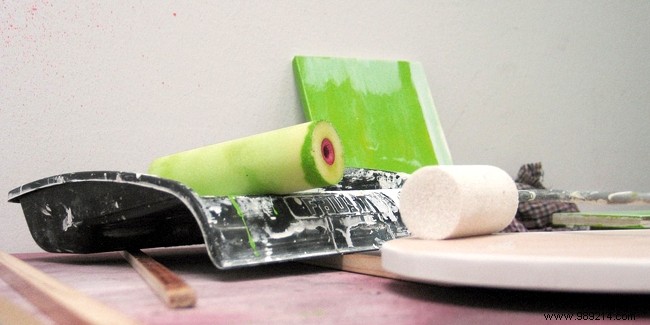
Giving a second life to your home does not necessarily require heavy work. All you need is a few coats of paint and your interior will regain all its shine! To benefit from a professional result, you will nevertheless need to know the best techniques to adopt for a successful painting job.
It seems obvious at first glance, but choosing the right paint is crucial for a quality result. The market is dominated by two large families of paint:water-based paint and oil-based paint. The first is the most common, as it dries quickly and does not give off a strong smell. However, it is more difficult to maintain and not very resistant to time. This is not the case with oil paint, which fears neither shocks nor time and which can be applied in damp rooms or in areas subject to repeated friction such as the stairwell or the hall. If the advantages of this paint are recognized by all, it is nevertheless penalized by its high rate of volatile organic compounds (VOC) which can be harmful to health. Moreover, since a European directive was adopted to reduce the level of VOCs in this product, it began to be less and less popular.
In addition to the type of paint, the choice of finish is not to be neglected. There is a whole palette of shades, to be selected with the greatest care, because the finish is as important as the type of paint or the color. Already, take into account that satin or matte finishes can hide defects and irregularities in the wall. On the other hand, they are not recommended in kitchens, children's rooms and other high-use areas. Glossy or lacquered finishes have the advantage of being easy to maintain and give an impression of space in the house. The problem is that on the contrary, they are only applicable on walls free of any irregularities.
To avoid possible unpleasant surprises, it is preferable to test the desired paint beforehand. There are manufacturers who now offer samples priced at 3 or 4 euros which allow you to have a taste of the final rendering. Simply apply them to a concealed part of the wall to try out color combinations and achieve the desired effect.
Under no circumstances should you skip preparing the surface before applying the paint if the idea is to obtain a professional result. This step begins with cleaning the support. Then comes the sealing of any holes or cracks. Make sure the wall is not subject to moisture. For this, use a plastic sheet that you will tape on the wall. Wait overnight and then check the next morning for any drops of water. If this is the case, it will be necessary to remedy the problem through very good ventilation.
All these steps completed, apply an undercoat and finish by laying the paint. But beware, painting work does not happen at any time. Outside, it must be neither too cold nor too hot, as this affects the coverage and performance of the paint. The ideal is to consider the project during the fall or spring. In this way, you will be able to ventilate the house well without suffering from strong heat or too great cold.